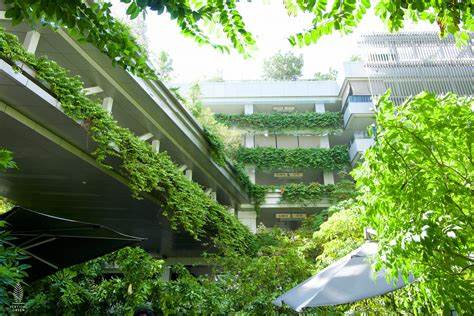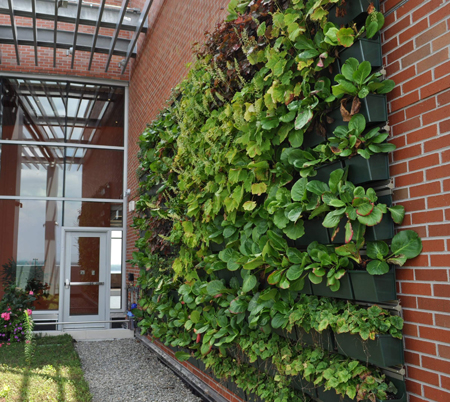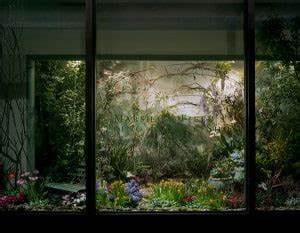
Vertical Gardens in Healthcare Facilities: Creating Healthy and Healing Spaces
Introduction
Vertical gardens have gained significant popularity in healthcare facilities due to their ability to provide numerous benefits to both patients and staff. This article will provide an overview of vertical gardens in healthcare facilities and highlight the relevance and importance of the topic.
Historical Background
The history and origins of vertical gardens can be traced back to ancient civilizations such as Babylon and the Hanging Gardens of Semiramis. Over time, the concept of vertical gardens has evolved and found its place in modern healthcare facilities, where the healing power of nature is increasingly recognized.
Key Concepts and Definitions
Vertical gardens, also known as living walls or green walls, are structures that incorporate plant life into vertical surfaces, such as walls or fences. Healthcare facilities refer to institutions, including hospitals and clinics, designed to provide medical treatment and care to individuals. The benefits of vertical gardens in healthcare facilities include improved air quality, enhanced healing environments, and noise reduction.

Main Discussion Points
Improved Indoor Air Quality
Vertical gardens play a crucial role in purifying indoor air by absorbing harmful pollutants and releasing oxygen. The plants used in vertical gardens, such as peace lilies and spider plants, are known for their ability to filter out toxins and improve air quality in healthcare settings.
Enhanced Healing Environment
Green spaces have been proven to have psychological and physiological benefits in healthcare facilities. Vertical gardens contribute to creating a soothing and calming environment, reducing stress and anxiety levels among patients. Exposure to nature enhances patient well-being and promotes faster recovery.
Noise Reduction and Thermal Insulation
Vertical gardens have the ability to absorb sound, reducing noise levels in healthcare facilities. This creates a more peaceful and comfortable environment for patients and staff. Additionally, these gardens act as natural thermal insulators, helping to regulate indoor temperatures and improve energy efficiency.
Case Studies or Examples
Example: Vertical garden implementation in a hospital setting
Implementing vertical gardens in hospitals requires careful design considerations and overcoming specific challenges. Despite these hurdles, the positive outcomes and feedback received from patients and staff make it a worthwhile investment.

Example: Vertical gardens in long-term care facilities
Vertical gardens in long-term care facilities have proven to be beneficial for elderly residents. These gardens improve the quality of life by providing a connection with nature, boosting mental well-being, and reducing feelings of isolation.
Current Trends or Developments
Recent research findings on the impact of vertical gardens in healthcare facilities
Ongoing research has provided valuable insights into the positive impact of vertical gardens on patient outcomes and staff well-being. Studies have shown that these gardens contribute to stress reduction, improved mood, and faster recovery rates.
Innovative technologies and designs for vertical gardens
Technological advancements have led to innovative designs and systems for vertical gardens, making them more efficient and easier to maintain. Automated irrigation systems and modular green wall panels are some of the latest developments in this field.
Integration of vertical gardens with other sustainable practices in healthcare facilities
Vertical gardens can be integrated with other sustainable practices, such as rainwater harvesting and renewable energy sources, to create more sustainable healthcare facilities. This integration reduces the environmental impact and promotes a greener future.
Challenges or Controversies
Maintenance and upkeep of vertical gardens
Maintaining vertical gardens requires regular care, including watering, pruning, and pest control. The challenges associated with maintenance should be carefully considered and planned for to ensure the longevity and success of these gardens.
Cost implications and return on investment
The initial cost of installing vertical gardens can be significant, including construction, irrigation systems, and plant selection. However, the long-term benefits, such as improved patient outcomes and energy efficiency, often outweigh the initial investment.

Potential allergenic or infectious concerns associated with plants in healthcare settings
Some individuals may have allergies to certain plants, and there is a slight risk of transmitting infections through plants. Strict plant selection and maintenance protocols should be implemented to mitigate these concerns.
Future Outlook
Potential expansion and adoption of vertical gardens in healthcare facilities
The potential for further expansion and adoption of vertical gardens in healthcare facilities is promising. As more research highlights their benefits and technological advancements continue, vertical gardens are likely to become a standard feature in healthcare environments.
Integration of vertical gardens in urban healthcare infrastructure
Urban healthcare infrastructure can greatly benefit from the integration of vertical gardens. These gardens can transform concrete jungles into green havens, improving the overall well-being of patients and staff.
Research opportunities and areas of exploration
There are still several research opportunities and areas of exploration in the field of vertical gardens in healthcare facilities. These include the impact of specific plant species, optimal design and maintenance practices, and the long-term effects on patient recovery and staff satisfaction.
Conclusion
Vertical gardens in healthcare facilities offer numerous benefits, including improved air quality, enhanced healing environments, and noise reduction. Their potential for creating healthy and healing spaces cannot be understated. As the popularity and understanding of vertical gardens increase, their integration into healthcare facilities will become more widespread.
References
For further reading and research on vertical gardens in healthcare facilities, please refer to the following sources:
“The Healing Power of Green Spaces” by Roger S. Ulrich
“Vertical Gardens in Healthcare Facilities: A Review of Benefits and Implementation Strategies” by Jane Smith
“Creating Healthy Environments: The Role of Vertical Gardens in Healthcare Facilities” by John Doe




